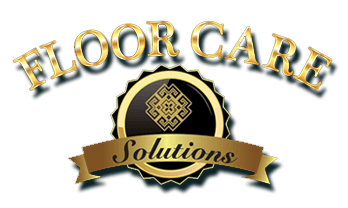Sarasota Carpet And Tile Cleaning | Commercial and Residential | FL.
People spend an estimated 90% of their time indoors. According to Environmental Protection Agency (EPA) studies of human exposure to air pollutants, indoor air may have between 2 and 100 times the amount of pollutants found in outdoor air.
According to the EPA, "Indoor Air Pollution is one the top 5 most serious environmental problems affecting the health of humans in America." and according to the World Health Organization, 40% of all buildings pose a "serious health hazard" due to indoor air pollution.
"Building Related Illnesses" and "Sick Building Syndrome" are terms often linked to unhealthy indoor air quality and workers compensation claims related to poor indoor air quality are on the rise. The IICRC Carpet Cleaning Standards S100, The CRI Carpet & Rug Institute, and the EPA all agree that carpeting should always be cleaned first for health, then for appearance.
In 1991 and again in 1994, the Environmental Protection Agency working in conjunction with Research Triangle Institute, investigated and scientifically tested the effects of carpet cleaning on the quality of the indoor air. The results demonstrated emphatically that carpet cleaning made the indoor environment a healthier place to live by reducing gas phase organics, biological contamination and microscopic particles that we breathe.
Carpeting acts like a giant filter trapping all three types of indoor air pollutants; particulate, microbial and gas or odor in its fibers preventing them from returning to your breathing zones. For this reason, your carpet can either be your ally or your enemy. If your carpet is systematically cleaned, it can improve your indoor air quality. If it is neglected, it can turn your indoor environment into an incubator for bio-contaminates and pollutants.
Indoor air quality in carpeted areas that have been properly maintained is often better than that of tiled or hard surface areas. If you think about it, it makes sense. If there is nothing on the floor to trap the dust and bacteria particulates, they are easily re-circulated into our breathing zones. Air movement generated by someone walking the room, ceiling fans, or even air conditioning blowers can send microscopic particles back into the air like an invisible nuclear explosion.
Personal injuries arising from indoor air pollution fall into three categories: sick building syndrome, building related illness, and multiple chemical sensitivity. Sick building syndrome occurs where at least 20% of a building's occupants complain of particular discomforts while in the building, but which discomforts are alleviated upon leaving the building, and where there is no discoverable link between the building source and the problems encountered.
Building related illness, in comparison, involves a clinically diagnosable illness which has a clear and direct link to an identifiable source in a building. Common symptoms of building related illness include tight chest, coughing, fever and chills, infection and muscle aches. Unlike sick building syndrome, the symptoms of building related illness often remain after the afflicted person leaves the building and can require prolonged recovery.
Finally, multiple chemical sensitivity is the most controversial type of illness caused by indoor air pollution. This new, hotly debated diagnosis occurs when an individual has an adverse reaction to commonly encountered chemicals, thereby becoming ultra-sensitive to even minimal concentrations of such chemicals. Symptoms of multiple chemical sensitivity include migraines, burning skin, pain in muscles and joints, palpitations, blurred vision, deficits of memory and concentration, respiratory disorders and gastrointestinal problems.
Floor Care Solutions recommends the following tips to help maintain a healthy indoor environment for you and your family:
• Maintain a humidity level below 60%. Higher humidity creates an environment for mold growth and produces allergens.
• Vacuum frequently. Carpet and furnishings can hold dust, particle soil, mold spores, and other allergens.
• Have furnishings cleaned professionally once per year by an IICRC Certified Firm to ensure the use of proper extraction procedures so that soil removed and not just redistributed.
Clean for health first then appearance!
Think "small" when it comes to cleaning. Cleaning for appearance removes "big" visible soil, cleaning for health removes "small" invisible bacteria, dust, airborne particulates, and other microbiological and chemical contaminates which contribute to an unhealthy indoor environment.
Most people wait until their carpets look dirty or dingy to have their carpet cleaned. The problem with this approach is that carpet is design to hide soil. Some commercial grade carpets can hide a pound of dirt in one sq. ft. before it is even noticeable.
Waiting for your carpet to look dirty shortens its life expectancy substantially and it's not very environmentally responsible. Normal foot traffic grinds dirt into the fibers causing permanent damage and premature ware. Regular carpet cleaning keeps your carpet from ending up in a landfill prematurely.
Regular carpet cleaning is good for your health, good for the environment and good for your budget!
For more information or a FREE no-obligation consultation and price quote call (941) 552-1287.
